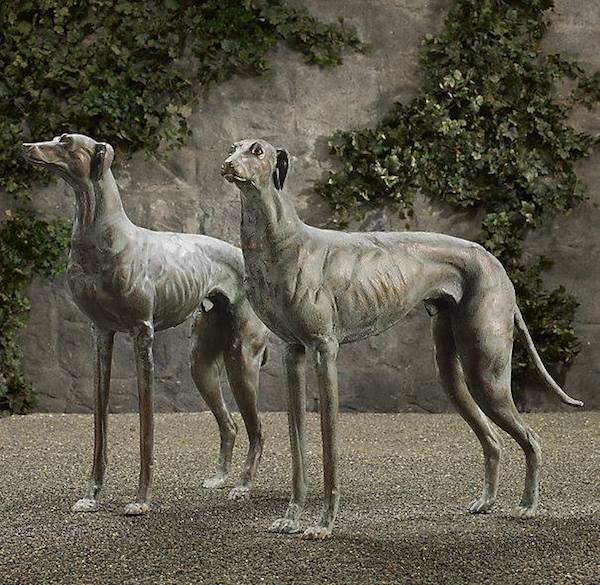
We know someone who once freaked out a child by telling the little tyke that they – the adult – had eyes in the back of their head.
Ok, it was us.
Shoulder shrug. It’s a parent thing. The expression is probably as old as parenthood, but idioms aside, nature is replete with critters that sprout fake eyespots to trick and deceive predators.
To our knowledge, the Greyhound has no natural predators, nor does the back of their head erupt with “pretend eyes” when threatened. That said, Greyhounds, like other sighthounds with thin heads and widely spread eyes, have 270 degree vision, and this means that they can see some of the back of their head.
As good as, right?
Not only can a Greyhound see objects behind them, they can spot objects over ½ mile in front of them. With stereoscopic vision, they are supremely suited to seeing moving objects, and they need that special vision to see critters on an open plain. For that reason, eyes of sighthounds like the Greyhound also have what’s called a ‘‘visual streak,” a horizontally aligned area in the retina that is lined with ganglion cells.
A while back, scientists thought that all dogs had their ganglion cells distributed this way, but researchers Paul McGreevey, Alison Harman, and Grassi T. D, found that only dogs with long noses have this visual streak. Dogs with short noses (think Pekingese, Pug and Boston Terrier) have their ganglion cells densely packed in one spot called the “area centralis.” The visual streak is therefore a characteristic of dogs with long muzzles who needed to rely on their peripheral vision to hunt – but Greyhounds are still special because the average dog has a field of vision around 250 degrees, while the Greyhound has a field of vision up to 270 degrees.
Our breeds are so very cool.
Image: Though the front assembly placement on the dog at the left worries us a little, it’s ok because these life-sized hounds (which you don’t have to feed or walk) are made of rustproof aluminum. Available here.
